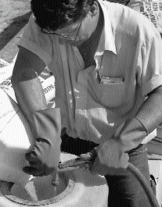No-Till Farmer
Get full access NOW to the most comprehensive, powerful and easy-to-use online resource for no-tillage practices. Just one good idea will pay for your subscription hundreds of times over.

No-Tillers rarely apply post-emergence herbicides without an adjuvant, whether it’s part of the manufacturer’s herbicide formulation or is added during tankmixing. But selecting adjuvants is no easy task, with more than 4,000 products on the market.
While the U.S. Environmental Protection Agency regulates herbicides, no organization provides adjuvant guidelines or regulations. As a result, selecting the best adjuvants is a daunting task even for the savviest no-tiller.
Bayer CropScience staffers recently outlined the “basics” on the various types of adjuvants in order to give you a much better idea of how each type works.
The most common types of adjuvants, these products are normally included in herbicide formulations, although they can also be added when tankmixing several herbicides, to aid or modify the action of an agrichemical, or the physical characteristics of the mixture. While effective and less expensive than many others, they’re often the slowest and least aggressive types of adjuvant products.
The most popular oil-based adjuvants, these products help spread the herbicide evenly on the weed’s leaf surface, help it penetrate through plant cuticles and allow prolonged herbicide uptake by preventing water evaporation and herbicide crystallization. Under most no-till conditions, crop oil concentrates act faster than nonionic surfactants.
This is the fastest acting, yet less commonly used adjuvant. It is a superior type of adjuvant that speeds up activity with certain herbicides. It is derived from crops such as soybeans, sunflowers and canola.
Ironically, something that…